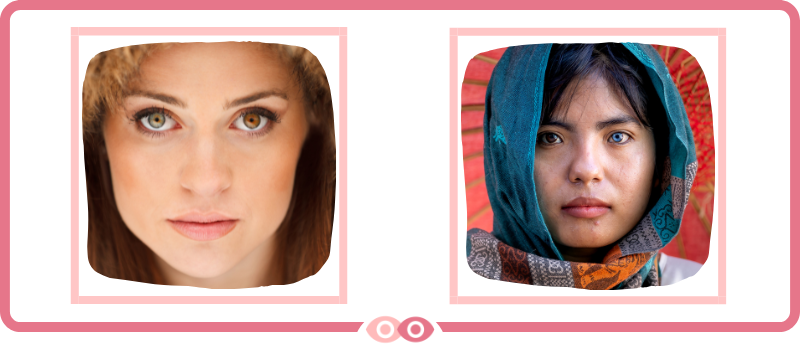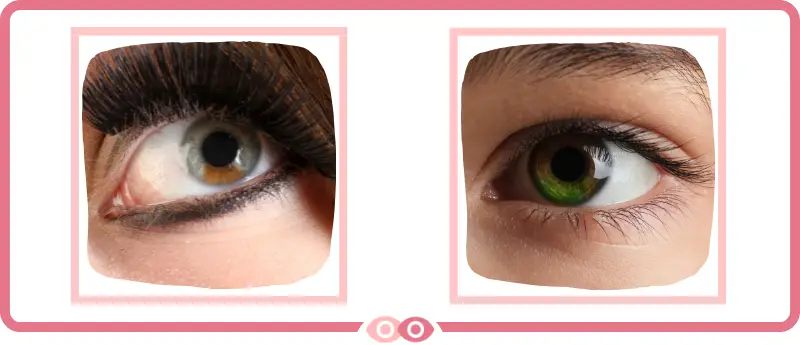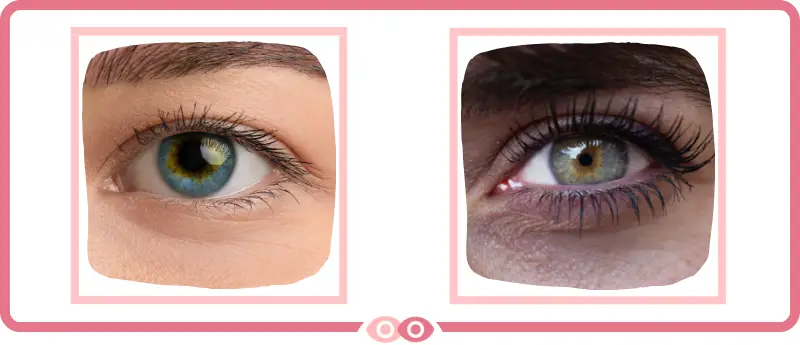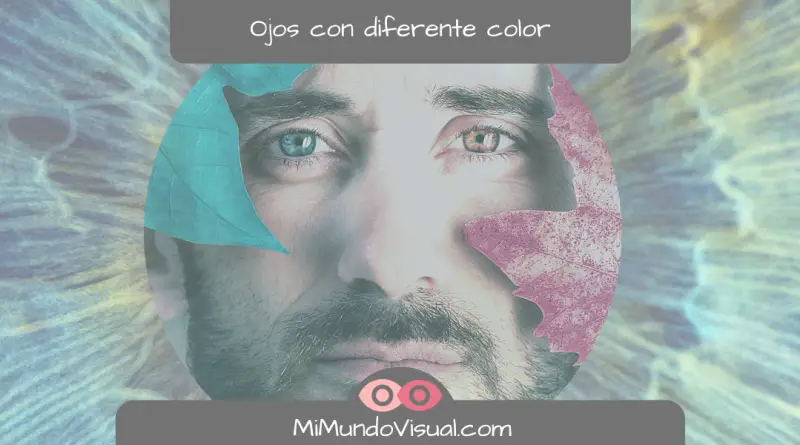Different Eye Colors? All About Heterocromia!
Tabla de Contenido
People who have different colored eyes have an eye abnormality called heterochromia.
Heterochromia causes each eye’s iris to be different and can also affect the hair or skin.
With this article, we want to:
- Learn what heterochromia means,
- Why heterochromia occurs,
- What types of heterochromia exist.
What does Heterochromia mean?
Heterochromia means having different-colored eyes.
In humans, heterochromia, or having one eye of each color, is rare. However, it is pretty common in animals such as dogs and cats.

There are different types of heterochromia. For example, complete heterochromia is when each eye is a different color.
In contrast, partial heterochromia occurs when one part of the iris has a different color from the rest.

Why does heterochromia occur?
Heterochromia occurs when the body has too much or too little melanin. Melanin is a pigment-producing compound found in plants and animals.
This eye abnormality can be congenital and present from birth, or it can be acquired.
Acquired Heterochromia
Acquired heterochromia can be caused by the following:
- Injury to the eye, such as hemorrhage or trauma, the eye.
- Administration of drugs into the eye;
- Diseases, such as glaucoma or even inflammation of the eye due to immune or other medical conditions;
- Inflammation in the eye’s middle layer, uveitis (located between the sclera and the retina, affecting the iris, ciliary body, pars plana, and choroid).
Congenital heterochromia
Heterochromia, in turn, may be due to an inherited genetic trait or genetic mosaicism.
Congenital heterochromia is the rarest form of heterochromia. It may be associated with rare diseases such as Waardenburg syndrome, Claude Bernard Horner syndrome, or neurofibromatosis.

Types of Heterochromia
There are three types of heterochromia in the iris: total heterochromia, partial heterochromia and central heterochromia.
Total Heterochromia

Total or complete heterochromia is the least common of all anomalies. It occurs when each eye’s iris is entirely different from the other. For example, one eye is blue, and the other is brown.
Partial heterochromia

On the other hand, partial or sectorial heterochromia is the most common type of heterochromia. Partial heterochromia occurs when only part of the iris is a different color.
For example, the iris is blue, and a small part is brown. It is more difficult to distinguish when the iris color is green, and a piece is brown.
Central heterochromia

Finally, central or partial central heterochromia occurs when the part of the iris around the pupil is of a different color than the outermost part.
For example, green and brown eyes around the pupil create rings, i.e., concentric circles of both colors are formed without mixing.
Conclusions About Heterochromia
Now that we know what people with different colored eyes are called and we have learned how this anomaly called heterochromia occurs and what types of heterochromia exist, we remind you that before any change in the color of our eyes, it is important to consult our doctor so that they can diagnose and find the cause of this change.
También te puede interesar…


